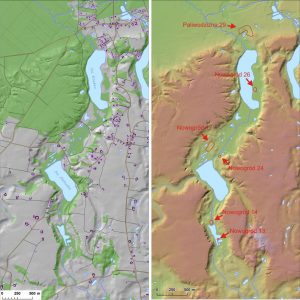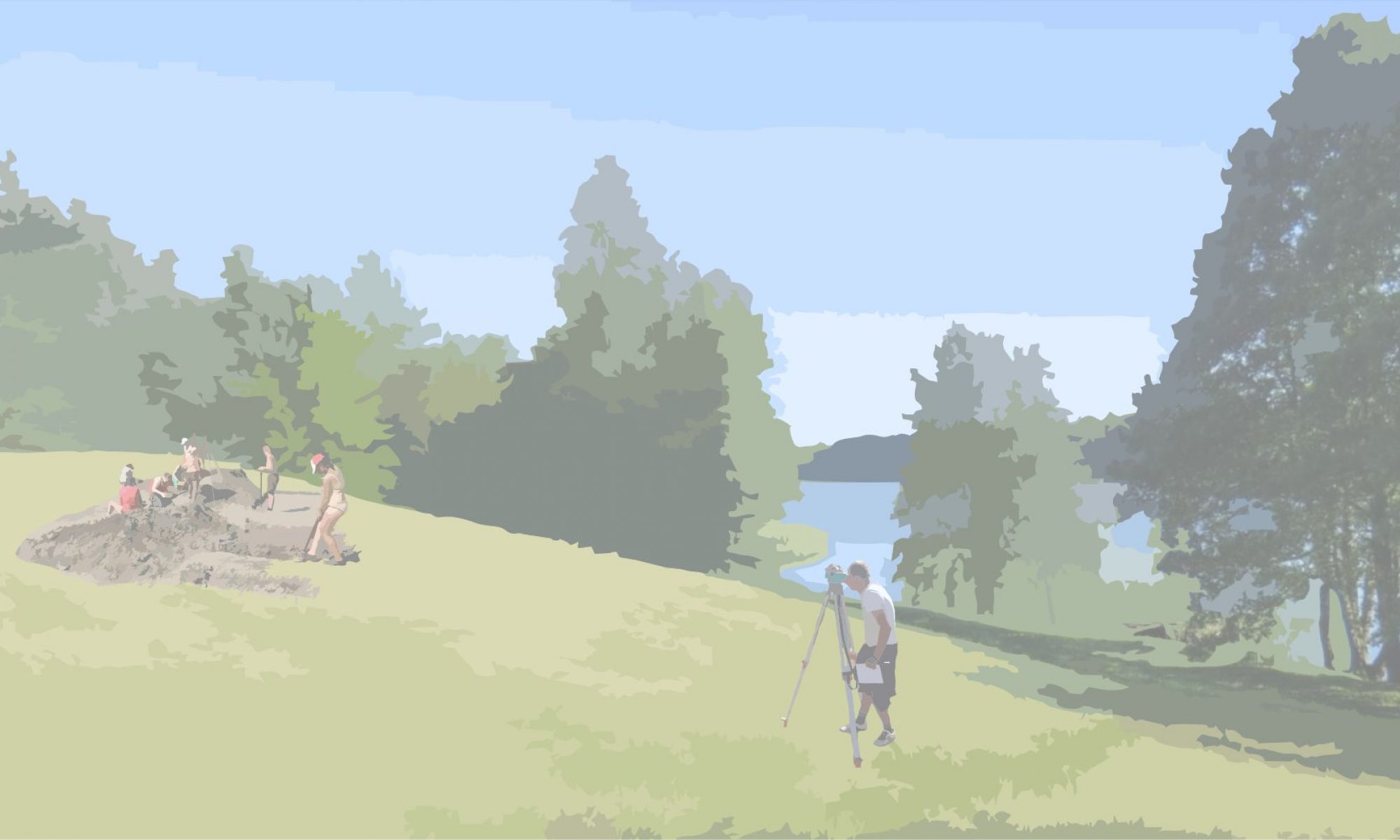 The objective of the project is a multi-aspect analysis of early Holocene community of hunter-gatherers from Chełmno-Dobrzyń Lake District, taking into account the study of their daily lives, mobility, relationships with the surrounding environment and other regions of Europe. The fieldwork and laboratory research proposed will focus on the aggregation of sites located in the subglacial valley of Grodno and Plebanka lakes (Chełmno-Dobrzyń Lake District, central Poland). The work will aim to expand the current knowledge on Mesolithic economy, localization and functional organization of camps and principles governing their internal arrangement. The research will be conducted on three layers: settlement, technological and economic ones.
The objective of the project is a multi-aspect analysis of early Holocene community of hunter-gatherers from Chełmno-Dobrzyń Lake District, taking into account the study of their daily lives, mobility, relationships with the surrounding environment and other regions of Europe. The fieldwork and laboratory research proposed will focus on the aggregation of sites located in the subglacial valley of Grodno and Plebanka lakes (Chełmno-Dobrzyń Lake District, central Poland). The work will aim to expand the current knowledge on Mesolithic economy, localization and functional organization of camps and principles governing their internal arrangement. The research will be conducted on three layers: settlement, technological and economic ones.
The aim of the studies of the first type is an attempt to interpret the settlement strategies of Mesolithic people in the analyzed region. An important point of the interpretation process will be here the spatial analyses with the employment of geodesic methods and GIS, which will aim to create precise, three-dimensional models of sites’ areas, taking into account the data collected through the use of all the analytical methods. It will allow for the analysis and interpretation of the internal spatial organization and the function of the particular camps. In addition, it will be carried out a reconstruction of the primary landscape around the studied sites and, in general, in the whole valley. To realize this aim, localization of the registered sites will be subjected to an analysis, taking into account the hypsometric situation and geomorphologic, hydrologic and soil conditions. In order to reconstruct the flora, palynological studies and analysis of plant macrofosiles will be carried out.
The second type of the planned studies (technological-typological) will aim at incorporating the obtained Mesolithic materials into the European cultural and chronological systems and reconstruction of the individual raw material working process in the region.
Problems addressed in the economic part of the project (based i. a. on use-wear method) may be divided into three blocks due to the character of the questions asked. The first one focuses on basic issues arising directly from the microscopic analysis of prehistoric artefacts, i.e. ways of production and principles of use of flint tools, as well as organic materials processing techniques. The second block covers the functional side of technological and typological issues. Questions posed here concern the principles ruling the use of stone material, morphological characteristics common and distinct for functional tools and ways of using different flint forms. In the third block are contained issues related to the analysis of function of the sites. The area of interest includes: the structure of activities performed within them, internal spatial organization, external functional diversity and possibility of interpretation of their origin.
The Project is important from many reasons. It is one of the few cases in which investigation of Mesolithic units includes, on such large scale, spatial analyses, with the use of information obtained through precise geodesic measurements and multi-faceted geomorphological, paleopedological, soil, hydrological, archeozoological, anthracological and palynlogical works. This will allow for a comprehensive reconstruction of the natural environment of the region of the studied sites and their morphology in the moment of occupation by Mesolithic people. This data will be correlated with information provided by excavations and comprehensive analyzes of the prehistoric material. It will allow to create an exceptionally precise image of communities occupying the Chełmno-Dobrzyń Lake District in early Holocene. The data obtained will be compared with the current knowledge on the nature of Mesolithic settlement in other parts of Europe (especially Scandinavia, which described communities remained probably in contact).
Extremely important for the assessment of cognitive values of the project is also, the continuation of long-term functional studies on communities the economy of which (in the range going beyond flint processing), we used to learn about so far mainly through isolated peat finds. Although that this type of analyzes are carried out recently, they have already enabled i. a. on identification of several types of specialist tools and artefacts with the functional profile not found in other periods. The results of them point also to the existence in the early Holocene, on the area of Chełmno-Dobrzyń Lakeland, camps of various functions. One can distinguish here places used for a longer time, economically specialized camps and classic seasonal camps or related to the short-term economic goal, e. g. hunting. Use of the results of biological, chemical and geographic analyzes will certainly allow to either make plausible or reject these suggestions, while microregional character of the research will allow for analysis of relations between camps located by the same water reservoir.
Very important for information obtained from the project will be access to archaeological sources for different reasons not found on the majority of early Holocene sites. Opportunity to conduct multifaceted environmental studies, also discover and analyze artefacts made of organic materials, unique for the period, encourages to consider the sites in the valley of Grodno-Plebanka as objects of great value for studies of the Mesolithic.
